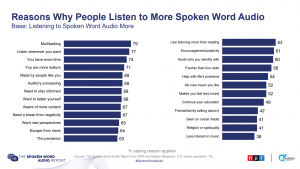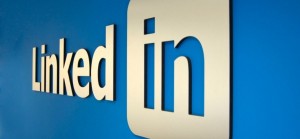— November 27, 2018

All right! You made it through the madness of Black Friday and Cyber Monday! Now the real work begins.
We hope you gathered in lots of sales and a bunch of new customers. But, you’ve also generated a spreadsheet full of numbers that tell you a lot about how your campaigns performed.
They also can prompt you to change some variables in your remaining holiday campaigns for better results. Slicing and dicing your site visits, opt-ins and visitor behavior in new ways can shed a lot of light on what works, what you need to improve and where you’re overlooking opportunities.
3 ways to use black friday & Cyber monday email data to your advantage
1. Review all of your process metrics
These are metrics that measure how your subscribers acted on your emails, like opens, clicks, unsubscribes and spam complaints. They don’t measure how successful your campaigns were, but they will show you how well your emails connected with your subscribers.
But, don’t stop there. Dive deeper into those stats and break them down by segments, conversions, time of day, platform (desktop, mobile and other devices) and any other variables at your disposal.
These questions will get you started:
- Did people who opened your Black Friday and Cyber Monday emails in the morning click to your landing page more often than your afternoon readers?
- Did people open them more than once?
- How many read on their phones and how many on desktops or other devices?
- Did your mobile openers click to your landing page more or less often than your desktop readers?
- Did you send more than one email on Black Friday? What differences did you find?
- Did you email throughout the weekend? If so, how did the actions compare?
- How did your Cyber Monday metrics compare to Black Friday and Saturday or Sunday emails?
- How did your Black Friday/Cyber Monday email performance compare to your regular email campaigns?
- Did your deliverability rates change significantly over the five days from Thanksgiving to Cyber Monday?
What to do with the data: If you find minor differences – slightly higher unsubscribes and spam complaints, for example, or lower open or delivery rates – you don’t necessarily have to spring into action to correct the problems. There was a lot going on in people’s inboxes over the long Thanksgiving weekend, after all. Big spikes, however, needed to be checked out ASAP.
2. Study your subscriber acquisition
Black Friday and Cyber Monday should have driven a stream of new shoppers to your websites. How many of them signed up for your emails?
You already should know your overall acquisition rate. Did you see a bump over the five-day shopping extravaganza? Higher web traffic without a corresponding increase in acquisition could mean you have problems either with your opt-in form or the way you word your invitation.
These questions will help you isolate the issues:
- Did you sent a goal for new subscribers? Did you meet it?
- How did your Black Friday-to-Cyber Monday acquisition compare to the same period in 2017?
- What percentage of visitors to your website completed your opt-in form? Look at both the opt-in forms on different interior pages on your site – landing pages, product, support or FAQ pages, etc. – and on home-page forms or modules like landing or exit popovers.
- Which day had the highest number of opt-ins? Did you do anything different on that day (unique incentive, different offer)?
- What was your form-completion rate? Ask your web team if you don’t have direct access in your email platform’s dashboard.
If you use double opt-in, what was your confirmation rate? - Did invalid email addresses hurt your delivery of DOI confirmation messages or your welcome email?
- If you use a popover, did it drive more or fewer opt-ins than a static form like a home-page or landing-page blank?
What to do with the data: A big drop-off in form-completion rates or activity could point to glitches in the process. Test-drive it now, before the heaviest shopping days (and then make a note to test this and all of your forms and processes repeatedly next year).
About those invalid email addresses: They could be accidental or deliberate typos. If you’re seeing a spike in invalid addresses, check out real-time email address validation on your forms, and be sure those invalid addresses don’t get added to your email database.
3. Assess what you’re doing to welcome your new subscribers
Shoppers who join your email program this time of year are probably more goal-oriented than people who opt in at other times. A welcome message that recognizes their special needs can help you stand out in the flood of confirmations and welcome messages that these shoppers will see in their inboxes.
If your email or CRM databases allow it, track your Black Friday/Cyber Monday customers’ behavior through the holiday season:
- What percentage redeemed the opt-in incentives you offered?
- If you offer incentives to some but hold out others, how did the incentivized shoppers differ in behavior? Are they buying more, buying at full price or waiting for discounts?
- What are your new subscribers doing with your post-welcome emails? Are they opening and clicking, or are they dropping off quickly?
What to do with the data: At this point in the season, you don’t have time to start a whole new email program. Instead, try adding helpful content to your regular welcome email that will make your brand more useful to your new customers.
Looking ahead: More ways to dissect the data
Email marketing is a game of numbers, and you have plenty of work with. We’ve covered some tactics to take with your Black Friday/Cyber Monday email subscribers, but you’ve got a whole season of campaigns and shopper behavior ahead of you.
Keep your eyes on your new subscribers and how they engage – or fall away – during the holiday season and on into the New Year. You could get valuable information that could help you create a more engaging opt-in process, keep more of your newbies on board and reduce your customer churn.
Digital & Social Articles on Business 2 Community
(37)






